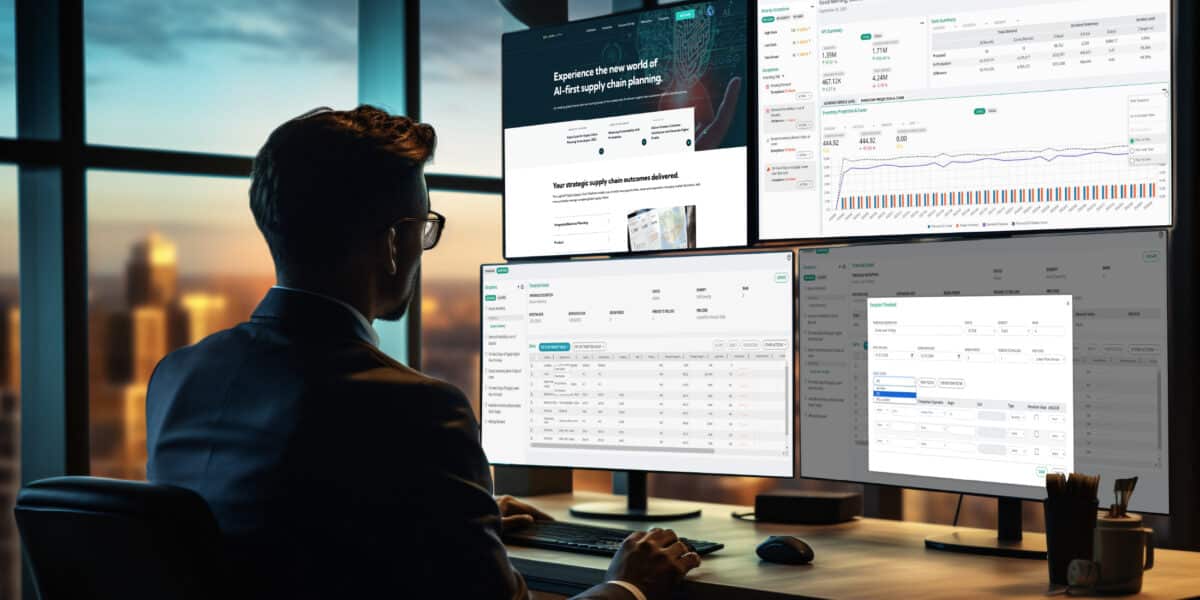
Work with your Supply Chain Planning Digital Twin
A retail industry analyst said the clients he is speaking with are scrambling around focused on near-term tactics to find inventory to place on shelves and serve consumer needs. Just look at the long lines and empty shelves at grocery stores and big box retailers. Even Amazon is struggling! He mentioned these clients are not thinking about the medium or long-term impact yet. Instead it is all about meeting the short-term need.
At some point though, everyone is going to need to focus on what’s next. What happens when so much effort was given to the short term that you don’t plan for the recovery? What will you do with that summer merchandise that may not make it to retail until Fall? Where will you place that inventory? These are questions everyone from manufacturing to retail must analyze now.
The Coronavirus, hopefully, is just an anomaly that will be in our rearview mirror soon. However, this isn’t the first surprise risk to impact supply chains on a global scale. There have been many opportunities for us to be ready, to have multiple scenarios and models to help base our playbooks and drive our responses. This shakeup to global supply chains has impacted both supply and demand.
As we work with our supply chain digital twin we can quickly visualize constraints across our network, anticipate spikes in demand. Our digital supply chain platform will help to quickly evaluate multiple scenarios and start to work through our response to rapidly identify the supply constraints and define alternate sourcing opportunities across multiple time horizons. We can quickly look at options to ramp up manufacturing and model how changes in our workforce may impact our ability to satisfy demand.
Continental Mills, a leading producer of dry bakery mix products with several popular consumer facing brands including the Krusteaz and Ghirardelli family of dry mixes, as well as a large foodservice business serving many of the leading restaurant chains in North America, faced a significant disruption challenge to their supply chain when the Avian Flu impacted the food and beverage industry.
In early 2015, Continental Mills knew the North American Avian Flu might disrupt its supply of eggs in the coming weeks. An outbreak of the Avian Flu in the Midwest U.S. had the potential to impact nearly 90 percent of the national dried egg supply, a key ingredient for a company that produces dry bakery mixes and uses nearly 2.2 million pounds of the product annually. At the same time, Continental Mills had started its seasonal process to ramp up production for the holiday season.
Early on, before many in the industry were aware, the Continental Mills team began evaluating alternative business scenarios that might enable the company to serve customers even with the impact of an Avian Flu disruption.
Strong relationships and close collaboration helped Continental Mills develop a model that showed the egg supply was likely to not reach pre-Avian Flu levels until March 2016. The company acted quickly to ensure it was able to meet its forecasted demand without a disruption in service. First and foremost, the internal team wanted to know what suppliers were affected and how that would impact their operations. The team then reprioritized production and simulated how far the current supply would go.
Continental Mills’ response leveraged its sales and operations planning (S&OP) process with clear communication across the company to leverage a variety of creative thinking, process innovation and formulation expertise. All core functional areas within the business (research and development, supply chain, sales, marketing, etc.) were involved from the very beginning to fully understand the impact this event would have to each group and how everyone could play a significant role in turning the situation around.
With Logility as the foundation for its supply chain planning, Continental Mills was able to quickly segment demand and rationalize its product portfolio to clearly prioritize products and formulations, which could be modified and those that, if needed, could be postponed. The company was able to take advantage of Logility’s ability to rapidly plan and re-plan multiple scenarios. In short order, Continental Mills was able to run several hundred scenarios and evaluate the impact of each option; gaining confidence with a multi-pronged approach to address the raw material shortage.
These quick actions ensured Continental Mills was always ahead of the crisis. They were able to effectively cover the supply gap, reduced the costs of formulations without any impact on the quality of the final product, and improved collaborative relationships with its key customers.
There is one certainty in supply chains: unexpected events will happen. To handle the unexpected you must prepare. Understand and model your network, inside and out, including key trading partners (supplier and customer) relationship to build your digital twin.
Don’t just draw a map; look at the intersection of each relationship and its impact across the network. As in the case of Continental Mills, make sure you have an open dialogue started with key partners inside and outside your business.
Trust is a critical success factor. Make sure you have trust built before a situation arises. Trust in your team, business impact assessment and ability to consider alterative scenarios. Another success factor is technology. The capability to quickly model and evaluate multiple scenarios can be the difference between success and failure. Spreadsheets, full of conflicting and nonintegrated data, put your business at risk, introduce uncertainty and reduce flexibility when responding to disruptions.
We will get past this and learn a lot from the experience. Take these learnings and build on them. Most importantly right now, make sure you and your family are safe.



